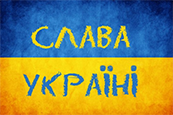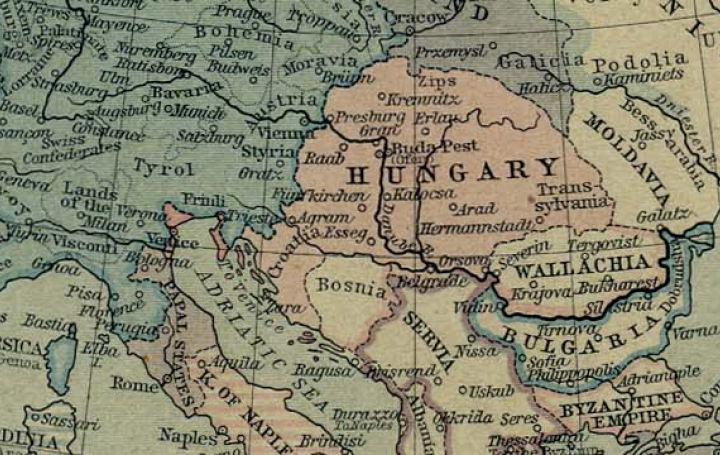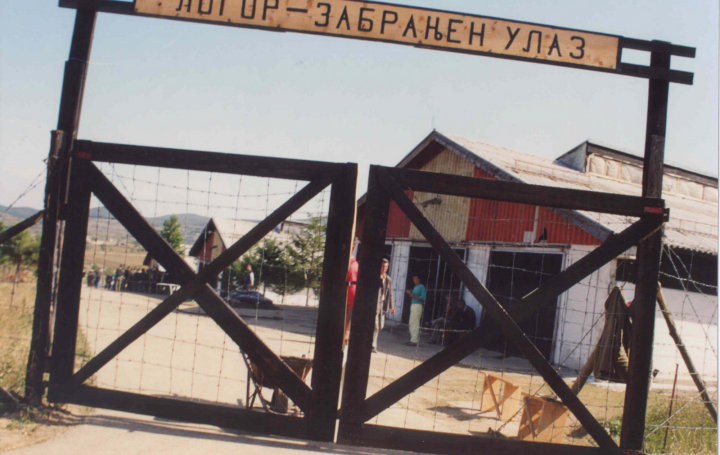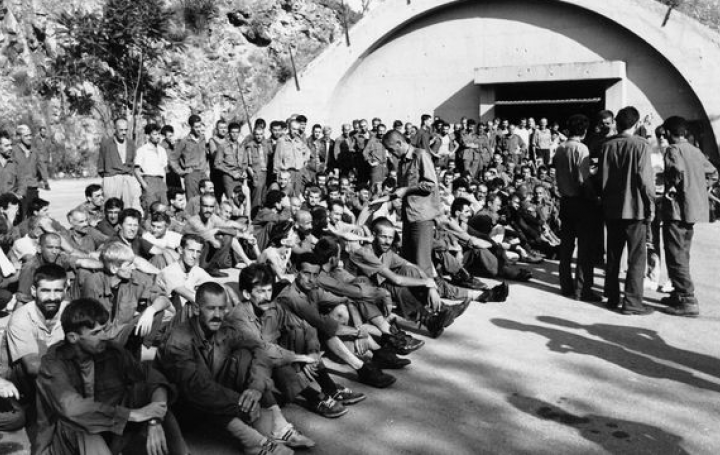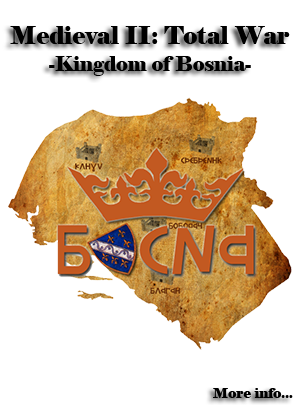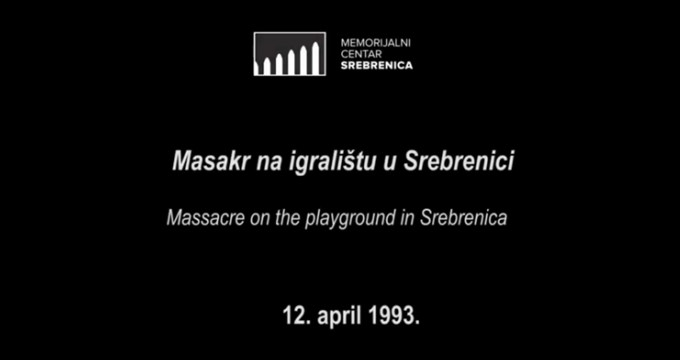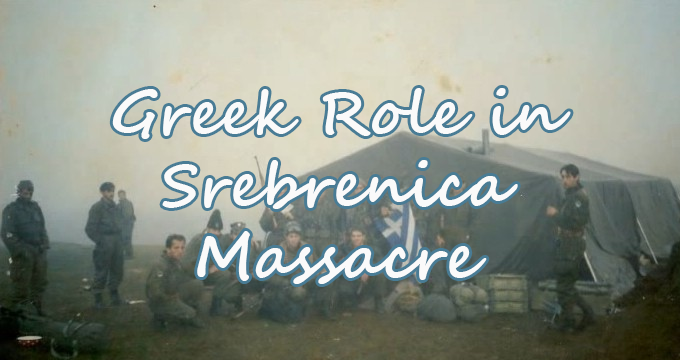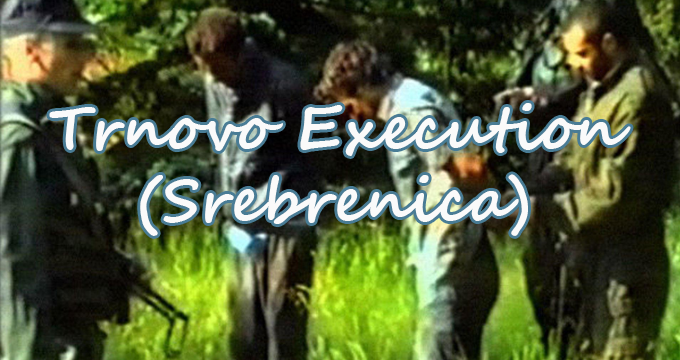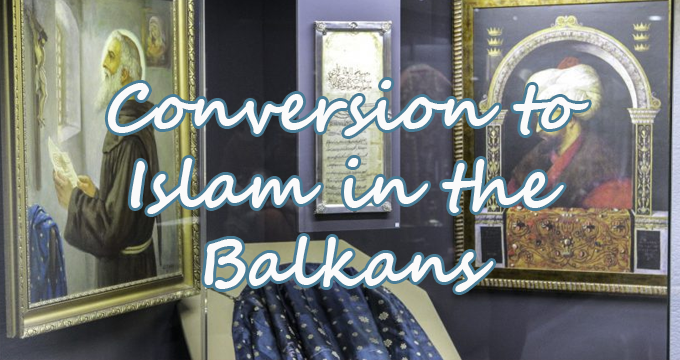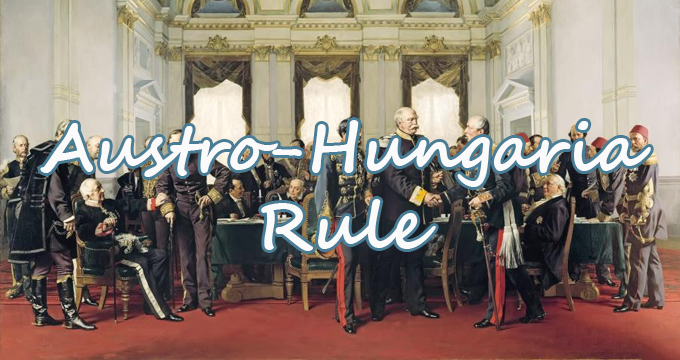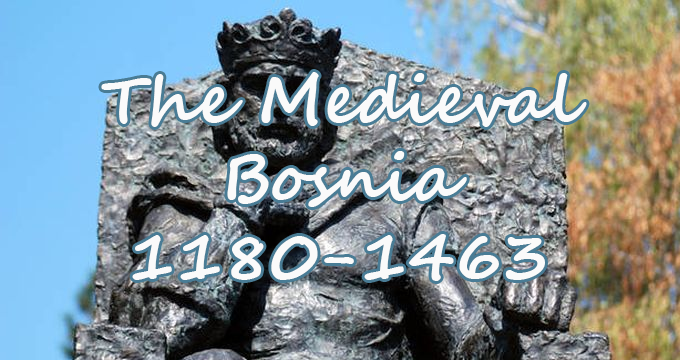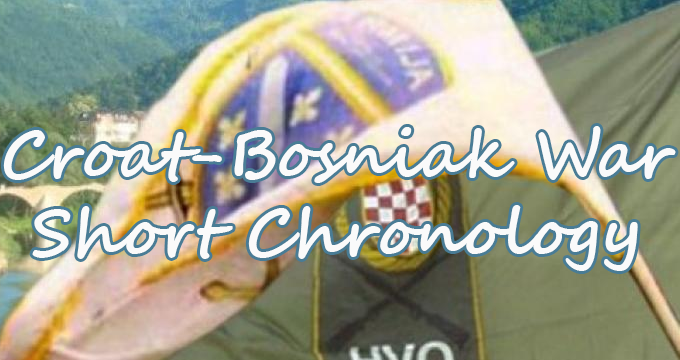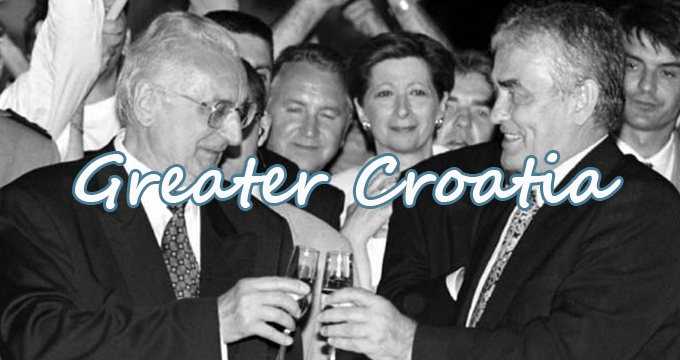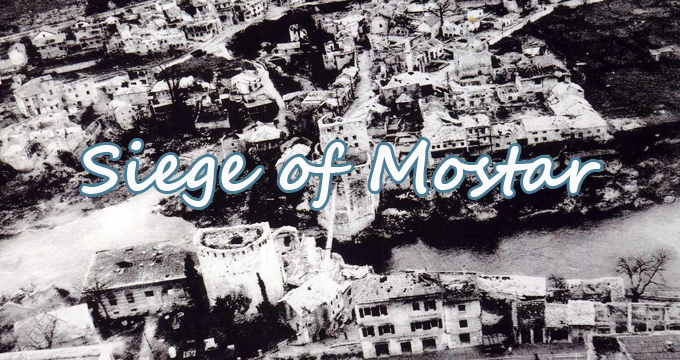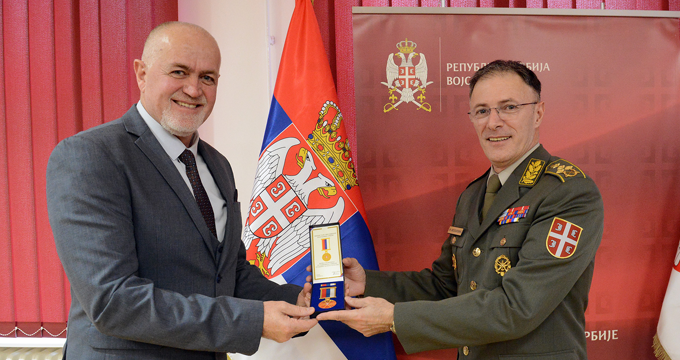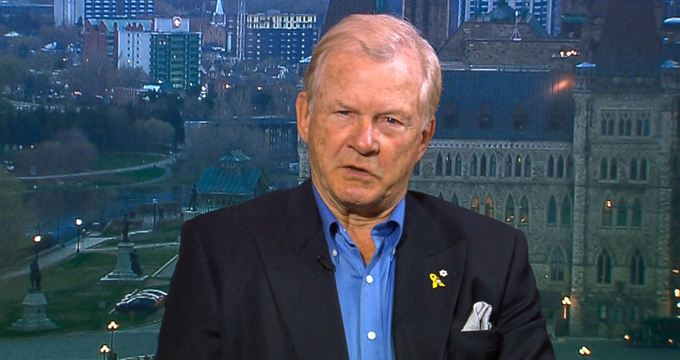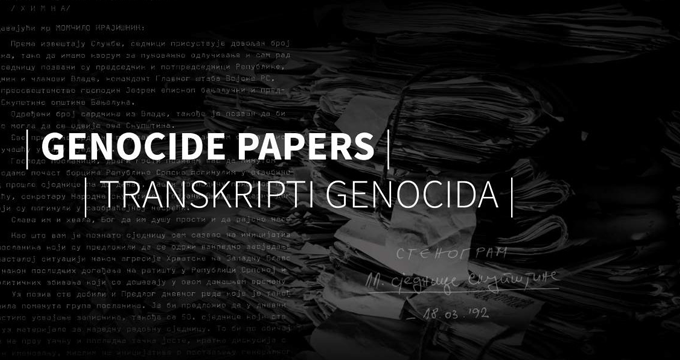Immediately after Karadjordjevo and Tikves, under the motto of the “protection of the endangered Croatianship in Bosnia and Herzegovina” and the “protection of strategic interests of the state of Croatia”, Franjo Tudjman initiated and mobilized the political movement of Croats in Bosnia and Herzegovina — the fifth columnist, and then also collaborationist party of the Croatian Democratic Union of Bosnia and Herzegovina, and its military component — the Croatian Defence Council.[1]
The documents available show the actual political goals of this party - formation of the Croatian state in Bosnia and Herzegovina and its joining to the Republic of Croatia, “regardless of the means and regardless of the price”. The goal was “to reach a Greater Croatia, Croatia within ‘maximum borders possible’, and this goal is so important that it gives a blessing to all the means available, regardless of the horrible consequences that may be caused”. This political decision “had beforehand and on an informed basis included the aspiration for division of Bosnia and Herzegovina, regardless of the means, regardless of the price, regardless of the victims, including forced creation of ethnically homogenous areas”,[2] involving numerous crimes, including genocide. Franjo Tudjman and the HDZ applied “the effort to create a Greater Croatia against the efforts for creation of a Greater Serbia”.[3]
In order to implement this long-term task — the formation of the “common Croatian state”, in compliance with the Greater Croatia policy, instructions, procedures and directives issued by Franjo Tudjman, President of the Republic of Croatia and of the HDZ, from whom orders were received as to how to proceed, the Croatian Democratic Union of Bosnia and Herzegovina undertook a number of organized activities. The more so because, according to the Act of Incorporation, as of August 18, 1990, the HDZ of Bosnia and Herzegovina was “constitutive part of the single HDZ organization, seated in Zagreb”.[4] Thus, at the working meeting of the presidents of Crisis Headquarters of the Herzegovina Regional Community and the presidents and representatives of the Crisis Headquarters of the Travnik Regional Community, held on November 12, 1991, in Grude, the following conclusions were adopted:
1) That “the Croatian people in BiH must ultimately undertake a decisive, proactive policy, which needs to bring to realization the centennial dream — a common Croatian state”.
In order to realize this “historical” goal (“… to have it as our reality, soon…”), the aforementioned “regional communities” adopted the position to “proceed with formulation and promulgation of the legal and political enactments (proclamation of the Croatian state in BiH, conducting of the referendum for joining the Republic of Croatia within its ethnic and historical (now potential) borders”.[5]
2) Starting from the assessment that “in a portion of the leadership of the HDZ for Bosnia and Herzegovina, there are still some forces that are objecting against these historical interests of the Croatian people in Bosnia and Herzegovina” and that these forces are “advocating in favour of the non-existent sovereign Bosnia and Herzegovina, in which the Croatian people would be doomed to genocide and historical annihilation”, the presidents and representatives of the “regional communities”, “demand decisive moves that are expected by our people and for the purpose of which this people have opted for the HDZ, one hundred percent”.[6]
The representatives of the aforementioned “regional communities” assessed that “any further hesitation” would weaken their positions, both within the Croatian people and with the international community. Thus, they concluded that they must “show both to Europe and the world what the Croatian territories in BiH are and where our future is”. They adopted the conclusion that the Croatian people “will under no conditions accept any other solution except the one within the borders of free Croatia”.[7]
In order to implement the adopted conclusions, the representatives and presidents of the aforementioned “regional communities” adopted the following positions as imperatives:
“a) clearly profile the party policy of the HDZ in Bosnia and Herzegovina, strengthen its staffing and select those people who will be able to carry these tasks to the end;
b) initiate political and legal initiatives internally and internationally;
c) prepare even better in military terms for conflict with all such forces that will attempt to stop this imminent process in creation of the free Croatian state;
d) beforehand, decisively prevent any public or covert activity in the leadership of the HDZ for Bosnia and Herzegovina that would contradict these decisions or harm them in any way”.[8]
It is significant to indicate upon the fact that the aforementioned “regional communities” had also brought similar conclusions at “prior separate sessions” too. It is even more interesting to point out that based on the aforementioned conclusions as of November 12, 1991, it can reliably be claimed that “the Croatian people of these regions still remains with the unanimously accepted options and conclusions adopted in negotiations with the President of the Republic of Croatia, Franjo Tudjman, held on June 13, and 20, 1991, in Zagreb”.[9]
At the aforementioned meetings between Franjo Tudjman and the leaders of the HDZ of Bosnia and Herzegovina and the HDZ, held after the meeting with Slobodan Milosevic in Split (June 12) and in Belgrade (June 19), discussing the division of Bosnia and Herzegovina, the political decision was made to form the “Croatian state” in Bosnia and Herzegovina.[10]
The idea of Franjo Tudjman, formulate on June 13, and 20, 1991, on “proclamation of the Croatian state in Bosnia and Herzegovina”, and its final merger with the Croatian state (the Republic of Croatia), was “bloodily developed” by Dario Kordic, Mate Boban and others for six months.[11] In addition, these two regional communities also took similar positions on October 15, 1991, in Grude, and on October 22, 1991, in Busovaca. All of this testifies of the continuity of such political option within the HDZ.[12]
Six days after the adopted conclusions in Grude, in order to “proclaim the Croatian state in Bosnia and Herzegovina” and in order “to join it to the Republic of Croatia” (“…within the borders of free Croatia”), relying on the Republic of Croatia, the HDZ of Bosnia and Herzegovina passed a “whole range of laws”. Thus, at the session held on November 18, 1991, in Grude, the ”elected representatives of the Croatian people” passed the “historical” Decision on Establishment of the Croatian Community of Herzeg-Bosnia — a collaborationist creation of the Republic of Croatia in Bosnia and Herzegovina, built after the model of the “Serb autonomous areas”, and “based on ethnic and religious discrimination”.[13]
The Decision determined that the seat of the Croatian Community of Herzeg-Bosnia should be in Mostar, that the “community” may admit other municipalities of Bosnia and Herzegovina too, “upon consent by the founding municipalities”; that the Community shall “respect the democratically elected government of the Republic of Bosnia and Herzegovina until such time as the state independence of Bosnia and Herzegovina exists in relation to the former or any future Yugoslavia”, and “all the applicable international enactments that are foundations of the modern civilization relationship in the society”.[14]
The Decision “formed” the Croatian Community of Herzeg-Bosnia, as a “political, cultural, economic and territorial whole”, and its territory was determined. Its territory is made up of the “areas of municipalities” - a total of 30, with various ethnic structure (in the largest number of them, the Croats were the majority, and in others they did not constitute the majority, and in some they did not even have relative majority): Jajce, Kresevo, Busovaca, Vitez, Novi Travnik, Travnik, Kiseljak, Fojnica, Skender Vakuf (Dobretici), Kakanj, Vares, Kotor Varos, Tomislavgrad, Livno, Kupres, Bugojno, Gornji Vakuf, Prozor, Konjic, Jablanica, Posusje, Mostar, Siroki Brijeg, Grude, Ljubuski, Citluk, Capljina, Neum, Stolac, and Trebinje (Ravno).[15]
The territory of the Croatian Community of Herzeg-Bosnia here did not include the Bosnian Posavina and the Prekounje areas, that is, the “Turkish Croatia”. This could be the consequence of the agreements reached between Tudjman and Milosevic, of which some had already been implemented (the Serbs from West Slavonia, under a form of “preventive evacuation”, were relocated into Bosnia). The Bosnian Posavina is a key issue for Greater Serbia. Without the corridor through Posavina, there is no territorial or communication link between Serbia and the occupied Podrinje with the Bosnian and Kninska Krajinas. Along with this, Slobodan Milosevic had not solution for the Prekounje area, that is, for the “Turkish Croatia”, so he heartily gave this to Franjo Tudjman as a gift.
Resulting from the non-genuine mutual cooperation between Tudjman and Milosevic, and their collaborationists, in late 1991 and early 1992, “Croatian Communities” were formed in these areas,[16] which in November 1992 had joined the single “Croatian Community” — the Croatian Community of Herzeg-Bosnia.[17]
In order to proclaim the Croatian state in Bosnia and Herzegovina, Tudjman had permanently had in mind that this understood inclusion of the “Croatian communities” and the Cazin Krajina into the Republic of Croatia.
The municipalities that “entered” the Croatian Community of Herzeg-Bosnia (“Founding municipalities of the HZ HB”), according to Mate Boban, had — according to the Census — an overall population of 55% Croats, 27% Bosniak, 9% Serbs, and the rest were “Others”. In order to increase the number of Croats in the Croatian Community of Herzeg-Bosnia, at the meeting with the President of the Republic of Croatia, on December 27, 1991, in Zagreb, Mate Boban “revealed” the key for increasing the number of Croats by 11% - “by cleansing the border areas, factually adjoining areas of Herzeg-Bosnia”. In this way — by way of crimes — “a 65% of Croats in this Herzeg-Bosnia” would be achieved, which, according to Mate Boban, a number larger by 2% than the one in Serbia (63%).[18]
The establishment of the Croatian Community of Herzeg-Bosnia was aimed at formation of a separate “mini-state community”, not defence from the “cruel aggression”, as stated in the preamble of the Decisions on the reason for the establishment. The formation of proper armed forces, “which, among other things, defend the ‘sovereignty’ of the HZ HB, without even mentioning the sovereignty of the Republic of Bosnia and Herzegovina, is a significant element of autonomy of the HZ HB and its separation out of the Republic of Bosnia and Herzegovina”. The most significant “element of autonomy of the HZ HB is a gradually built and autonomous legal system, completely separate from the legal system of the Republic of Bosnia and Herzegovina”.[19]
The formation of the collaborationist Croatian Community of Herzeg- Bosnia and its secession from the Republic of Bosnia and Herzegovina was aimed at — joining the neighbouring state, the Republic of Croatia. The Croatian people in the Travnik regional community, according to Dario Kordic, at the meeting between the President of the Republic of Croatia, Dr. Franjo Tudjman, and the delegation of the HDZ of Bosnia and Herzegovina, attended by the officials of the Republic of Croatia, held in Zagreb, on December 27, 1991, “live with the idea of final joining the Croatian state and they are ready to realize this using all means available, and the young guys have this Croatian spirit burning inside”. The merger with the Republic of Croatia, according to him, is the only option that the Croats have to believe in, “even if it may be in three months’ or in a year’s time”. Only through “a clear state mechanism of the State of Croatia, that would be the safeguard for the Herzeg-Bosnian Croats” would it be possible to “set borders of the Croatian soil on the territory of Herzeg- Bosnia” and prevent “the Croatian population from annihilation”.[20]
Based on the documents of the Croatian Community of Herzeg- Bosnia (from the Decision for establishment, until the formation of the “Croatian Republic of Herzeg-Bosnia” and later on), it can be established that the autonomy and secession from the Republic of Bosnia and Herzegovina, in order to join the Republic of Croatia, was the ultimate goal of this collaborationist creation. The potential for association with the Republic of Croatia after formation of the “Croatian Community of Herzeg-Bosnia” was “prevailing, both in the bodies of the HZ HB and the HDZ of Bosnia and Herzegovina (after the dismissal of Stjepan Kljuic), and in the ruling structures of the Republic of Croatia”. Even the enactments issued by this creation “contain a lot of elements expressing in various ways the link between the HZ HB and Croatia”.[21]
Formation of the ethnically homogenous HZ HB, in order to associate with Croatia, was again confirmed one month later. Namely, at the second regular session on December 23, 1991, in Tomislavgrad, the Presidency of the Croatian Community of Herzeg-Bosnia, “based on the quality and comprehensive discussion”, brought a number of conclusions, among which the following: “The Croatian Community of Herzeg-Bosnia once again confirms the will of the overall Croatian people of Herzeg-Bosnia, expressed on November 18, 1991, in Grude, by bringing the historical decision on establishment of the Croatian Community of Herzeg-Bosnia, constituting the legal ground for entry of these territories into the Republic of Croatia”.[22]
At the aforementioned session, the Presidency of the HZ HB denied legitimacy for Stjepan Kljuic in his autonomous proceeding. Then, among others, the conclusion was brought “authorizing President Mr. Mate Boban, vice-presidents Bozo Raic and Dario Kordic, and secretary Ignac Kostroman, to have full legitimacy in representing the Croatian Community of Herzeg-Bosnia in the negotiations in Zagreb on December 27, 1991, (as well as in the future, related to the further programmatic activity of Herzeg-Bosnia and the Croatian Democratic Union of Bosnia and Herzegovina”. Concluding that there are no personal conflicts between the leadership of the HZ HB and the President of the HDZ, Stjepan Kljuic, and that this involves “a conflict between two political concepts of the policy so far”, it was assessed that “Stjepan Kljuic has gone away from the determined and agreed policy”, thus “causing big confusion for the members and the Croatian population on the ground”.[23]
Given the fact that all of its bodies consisted in full and only by the HDZ candidates (the HDZ is the only political party of the HZ HB), the mono-party monopoly of the Croatian Community of Herzeg-Bosnia, from the aspect of integration and association with the Republic of Croatia, was of decisive importance, because the HDZ of BiH “is a constitutive part of the HDZ organization seated in Zagreb (Art. 4 of the Act of Incorporation of the HDZ of BiH brought in Sarajevo, on August 18, 1990)”. In offering the answer to the question “how did the leadership structure of the HDZ BiH and the HZ HB understand and realize this statutory decision”, Ribicic states that this was discussed by Mate Boban at the meeting of the top officials of the HDZ of Croatia and the HDZ of BiH, at the meeting in Zagreb, on December 27, 1991, in the position that “the HZ HB has proclaimed itself to be an independent Croatian territory, but that the ‘Croatian leadership’ shall decide on the point of association of this territory to Croatia”. On this basis, after dismissal of Stjepan Kljuic, according to Ribicic, the Croatian Democratic Union of Bosnia and Herzegovina “became not only the constitutive part of the HDZ of Croatia, but also the part of the HDZ of Croatia, subordinated to the centralized leadership of the party in Zagreb and President of the party, Dr. Franjo Tudjman”.[24] Obviously, the HDZ of Bosnia and Herzegovina never was an autonomous political factor.
Along with the option of secession of the Croatian Community of Herzeg-Bosnia from Bosnia and Herzegovina, and accession to the Republic of Croatia, from July 3, 1992, when the Presidency of this creation adopted the revised text of the Decision on establishment, the “reserve option” also appeared “to remain within Bosnia and Herzegovina, to be based on a non-unitarian, that is, (con)federal model of the state system”, at which “the pragmatic position ruled was prevailing in terms that the autonomy and sovereignty of the HZ HB need to be established and protected, regardless of whether it will ultimately become/remain an autonomous state community, an autonomous part of the new (con)federal Bosnia and Herzegovina, or it shall accede to Croatia as its autonomous province or canton with a special status”.[25]
At the meeting between the President of the Republic of Croatia, Franjo Tudjman, and the delegation of the HDZ of Bosnia and Herzegovina, attended by the officials of the Republic of Croatia, held in Zagreb on December 27, 1991, when the supporters of the political concept of a sovereign and independent Bosnia and Herzegovina were defeated, Franjo Tudjman dictated the option of accession of the Croatian Community of Herzeg-Bosnia to the Republic of Croatia.[26] After that, the Croatian and Serb collaborationists continued with contacts, for the purpose of concretization of arrangements for the division of Bosnia and Herzegovina between Franjo Tudjman and Slobodan Milosevic (on January 8, 1992, in Zagreb, on February 27, and May 6, 1992 in Gratz, etc.).
The political leadership of the Republic of Croatia, headed by Franjo Tudjman, in early April 1992 established a military formation in Bosnia and Herzegovina — the HVO, “a formally independent, but actually part of the armed forces of the neighbouring state”.[27] Namely, pursuant to Article 7 of the Decision on establishment of this creation, at the extraordinary session in Mostar on April 8, 1992, the Presidency of the HZ HB brought the Decision on formation of the Croatian Defence Council, “as the supreme body of defence of the Croatian people in the Croatian Community of Herzeg-Bosnia”.[28]
The decision on formation of the Croatian Defence Council, seated in Mostar, was illegally brought by Mate Boban in the capacity of the President of the HVO and the Croatian Community of Herzeg-Bosnia, on April 8, 1992, on the same day when the Presidency of Bosnia and Herzegovina brought the decision for formation of the Territorial Defence
— legitimate military organization of the Republic of Bosnia and Herzegovina. Thus, he did not accept the Territorial Defence of the Republic of Bosnia and Herzegovina, because “for the Croats in Herzeg-Bosnia, it does not exist”.[29]
Two days later, starting from the assessment that the “Croatian people have been left on their own”, and that it has “by itself organized and defended — created its defence — formed its defence forces”, the Presidency of the “Croatian Community of Herzeg-Bosnia” brought the “Decision that the Supreme Command over those forces shall only be assigned to the CROATIAN DEFENCE COUNCIL” [capital letters in the original — note by the author] This body, according to the Order of the President of the HZ HB and HVO, Mate Boban, as of April 10, 1992, sent to all the municipal headquarters of the HVO, “was the only legal one”, and this term was “the only official one”.[30]
The Croatian Defence Council had had its Main Headquarters, and in the HZ HB municipalities, it had its municipal headquarters. For instance, in Bugojno, one such was established in Bugojno on April 8. As of April 10, 1992, pursuant to the aforementioned order by Mate Boban, the Main HVO Headquarters “only communicates with the municipal headquarters of the Croatian Defence Council”, and “all the other military formations on the territory of the HZ of Herzeg-Bosnia are either illegal or enemies”, and “all other names shall be omitted from official use”.[31]
General Ante Roso, commander of the Main Headquarters of the HVO, on May 8, 1992, pursuant to Boban’s illegal decision dated April 8, issued the order for “suspension” of the Territorial Defence of the (Republic) of Bosnia and Herzegovina, believing it illegal on the territory of the Croatian Community of Herzeg-Bosnia. On this territory, based on this order, “the HVO units were the only legal units”. All other military units were obligated to “join the single system of defence and recognize the HVO headquarters as the main command” on the territory of this collaborationist creation.[32]
On May 11, 1992, Tihomir Blaskic (“The Commander of the HVO ARMED FORMATIONS”) issued a Command implementing the Order of Ante Roso, based on which the units of the Croatian Defence Council “on the territory of the Kiseljak Municipality” became “the only legal military units”, and the Territorial Defence was pronounced illegal. Thus, the order by Ante Roso, the general of the Croatian Army, was implemented fast. President Franjo Tudjman and Tihomir Blaskic also applied the same policy in terms of control over the ammunition factory in Vitez, threatening that they would blow it up if it gets attacked by the Army of the Republic of Bosnia and Herzegovina.[33]
In the first half of 1992, in some places of Bosnia and Herzegovina, the HVO units suspended the legal bodies of the Republic and usurped power. In relation to this, the “ORDER” of May 10, 1992 is particularly indicative, signed by the vice-President of the HVO, Dario Kordic, and commander of the Busovaca HVO municipal headquarters, Ivo Brnada. This document suspended the legal power in Busovaca, and pursuant to the orders of the HVO of HZ HB, the HVO took over all the power functions; the legal Busovaca TO units were proclaimed paramilitary formations and they were imposed an ultimatum “to surrender all weapons they possess, or to have all those forces placed under the command of the HVO, including placing of HVO emblems on them”; the agreement was suspended between the HVO and the Busovaca TO about division of armament and the decision was brought “to take over the overall armament, equipment and resources and barracks on the part of the HVO”; there was the need to establish contact with the “Serb army at Kaonik” (with the Zenica JNA garrison); the town of Busovaca was fully blocked, and under the threat of arms, the will of the “extremist group” was imposed in the whole area.[34]
Pursuant to the Statutory Decision on the Interim Establishment of Executive Power and Administration on the territory of the Croatian Community of Herzeg-Bosnia, dated May 15, 1992, and amended on July 3, 1992, the Croatian Defence Council became the supreme body of executive and administrative power on the territory of the HZ HB. Just like each of its members, it reported to the Presidency of the HZ HB. In this way, the Presidency of HZ HB secured control over the municipal HVO and single implementation of its regulations on the whole territory of the HZ HB.[35]
The HVO was organized as a government, with President, vice- presidents, department heads and others, in which department heads had the status of the office of ministers in the government. The HVO performed central supervision over the work of its departments and municipal HVOs, it could revoke or suspend their enactments, and dismiss them, which, according to Ribicic, is of “particular importance to establishment of the state power on the whole territory of the HZ HB”.[36]
In accordance with the Statutory Decision on Interim Establishment of the Executive Power and Administration on the territory of the Croatian Community of Herzeg-Bosnia, the HVO was granted broad authorities to regulate “economic and other relations on the territory of the HZ HB” through decrees, decisions, rulings and conclusions.[37]
The municipal HVOs were formed in mid 1992. Thus, for instance, the municipal HVO in Bugojno was formed on July 7, 1992, when Mate Boban, President of the HZ HB and the HVO, pursuant to Article 2 of the Statutory Decision on Interim Establishment of the Municipal Executive Power and Municipal Administration, brought the Decision on Appointment.[38]
With the Decree on Armed Forces of the Croatian Community of Herzeg-Bosnia, passed on July 3, 1992, the Presidency of the HZ HB established the armed forces, as the “fundamental bearer of armed resistance”, protecting the sovereignty of the HZ HB and defending “its territorial integrity”. Namely, the Decree regulates “the rights and obligations of citizens, powers of the Croatian Defence Council (hereinafter referred to as: the HVO), administration bodies and legal entities, in defence of sovereignty and territorial integrity of the Croatian Community of Herzeg-Bosnia (hereinafter referred to as: HZ HB), and other issues relevant to the defence system”. The Decree also governs: the duties of citizens in defence (working, military and material obligation, then obligation of participation in civil defence, and “in the surveillance and alarming service”, powers of the HVO, bodies of administration of the HZ HB and legal entities in the defence affairs (HVO, administrative bodies and other bodies of the HZ HB), legal entities, directing and commanding over the armed forces, filling in of the armed forces, mobilization of the armed forces, flags and emblems of the armed forces, active professional composition of the armed forces, the right to compensation, penal provisions, and transitional and final provisions.[39]
The Decree on the Armed Forces of the HZ HB made efforts to have this collaborationist creation presented as an autonomous and sovereign state community, which got separated from the Republic of Bosnia and Herzegovina.[40] However, in reality, this creation was executing the orders of the superior, the one who had formed it, that is, of the Republic of Croatia.[41]
The HVO was serving the enforcement of the Greater Croatia goals of the Republic of Croatia. Together with the collaborationist formations of the HVO, subordinated to the Croatian Army, executing its (occupation- related) tasks, the Croatian Army occupied part of the territory of the Republic of Bosnia and Herzegovina (the Croatian Community of Herzeg- Bosnia), believing it to be Croatian, in order to associate it with the Republic of Croatia. The HVO members had also believed that Franjo Tudjman was their President and supreme commander.[42]
The HVO was therefore in the service and under direct command by Zagreb, where the political and military leadership of the Republic of Croatia had appointed leaders, high-ranking HVO officials.[43] The HVO was no autonomous political or military factor in the Republic of Bosnia and Herzegovina. These were collaborationist forces under the command of the Republic of Croatia, that is, in within the single system of directing and commanding by the Croatian Army. Even some of the highest-ranking officers of the Croatian Army were appointed members of the HVO.[44]
The Republic of Croatia had possessed and exerted full control (formed, ordered, armed, equipped, sustained) over the Croatian Community of Herzeg-Bosnia, and the Croatian Defence Council, and over the Croatian political and military leaderships in the Republic of Bosnia and Herzegovina in general.[45]
The bodies of the collaborationist Croatian Community of Herzeg- Bosnia passed decrees, decisions, rules of procedures, regulations and many other enactments, which governed the matter governed by laws in states, important to the activity of each state community. All the enactments adopted by the HZ HB were only modified in order to conceal the truth, but they were brought as per the orders of the supervising instances of the Republic of Croatia. The organization of power in the HZ HB was mainly taking over certain solutions and names of bodies from the contemporary Croatian constitutional legal system and historical tradition. The official language was “Croatian”. Many documents of this collaborationist creation prescribe the use of the Croatian language at schools, institutions, and the like. The official currency was the Croatian dinar. The Flag of the armed forces and the coat of arms of the HZ HB (“the historical flag” and the “historical coat-of-arms”) were mainly identical to the solution from the Constitution of the Republic of Croatia from 1990. The import of commodities from Croatia into the HZ HB was governed in a special way (certain customs regulations were not applicable to the commodities imported from Croatia), and the like. Such system is the expression of the overall relations between the HZ HB and the Republic of Croatia, which was in various ways, even financially, supporting the HZ HB.[46]
The HZ HB bodies had accepted all the legal enactments issued, suggested or ordered by Franjo Tudjman (all of his ideas and instructions were realized by the HZ HB). These bodies exercised state policy and executed direct instructions from the bodies of the Republic of Croatia, which is, in addition to many authors and certain officials of the HDZ of Croatia and Bosnia and Herzegovina, and documents, also indicated by the fact that the HDZ of Bosnia and Herzegovina, as the decision- making political force in the HZ HB, was a constitutive part of the HDZ of Croatia, seated in Zagreb.[47]
Therefore, this was no sovereign state community, because its highest bodies were subordinated to another state, but a collaborationist body of the neighbouring state, occupational force — the Republic of Croatia, enforcing the state policy and executed the decisions of this occupational force which was superimposed to it.[48]
In late August 1993, the non-constitutional and collaborationist creation of the HZ HB, in compliance with the dual role of the arbitrators from the international community and the new peace plan (Owen- Stoltenberg Plan), behind which the initiative (a joint proposal) of Milosevic and Tudjman stood,[49] was again illegally transformed into a “republic”. Thus, it “improved its governing structures” for forming the Croatian republic. On August 24, 1993 in Livno, the headquarters of the Croatian Democratic Union of Bosnia and Herzegovina proclaimed the collaborationist creation of the Croatian Republic of Herzeg-Bosnia, and constituted the “house of representatives” that had the function of the parliament.[50]
Four days later, that is, on August 28, 1993, “in compliance with the political decisions of the Croatian Democratic Union for Bosnia and Herzegovina, as the legitimate representative of the political will of the Croatian people”, the house of representatives of the “Croatian Republic of Herzeg-Bosnia” passed the Fundamental Decision on Establishment and Proclamation of the Croatian Republic of Herzeg- Bosnia. In the Decision, the HZ HB is called the “republic” and “state community”, which meant “a step forward in the process of autonomy in relation to the HZ HB”. In this way, the then “community” (HZ HB) became a “republic”, defined as “single and undividable democratic state of the Croatian people in Bosnia and Herzegovina, based on human rights and freedoms, rule of law and social justice”. This is a new name for the “community” which has the same territory (the area of the Croatian Community of Herzeg-Bosnia), with Mostar as the capital of the “republic”.[51]
The Fundamental Decision suggests that “the people shall exercise its rights in the Republic”, in which the power “derives from people and belongs to people as the community of free and equal citizens”, at which “people shall exercise power by electing their representatives and through direct decision-making”. However, this mono-ethnic definition of the “Republic” (“the state of the Croatian people”) is still present, in spite of being supplemented with principles on human rights and freedoms, rule of law and social justice.[52]
The Fundamental Decision on establishment and proclamation of the Croatian Republic of Herzeg-Bosnia (hereinafter referred to as: HR HB), envisages for passing of the Constitution, “indicating upon the ambition for establishment of its statehood”, which will, among other things, also determine its “final borders”, then the coat of arms, the flag, and the anthem. It was also envisaged that the “Republic” shall freely associate into the union of republics, where “certain rights and obligations of the Republic” may be exercised “in the joint bodies of the union of the republics”, stressing that “the sovereignty of the Republic is undividable, unalienable and non-transferable”.[53]
Pursuant to the Fundamental Decision, the state power in the HR HB was established on the principles of parliamentary democracy and division of power into the legislative (house of representatives), executive (government), and judicial (independent courts). The President and the members of the government were elected and dismissed by the house of representatives, upon the proposal of the President of the republic. The President of the republic “shall represent the Republic in the country and abroad, expressing its constitutional unity and ensures single activity on the part of all the state power bodies”. He is “the supreme commander of the Armed Forces of the Republic, he shall appoint and dismiss the highest ranking military officers, upon the obtained opinion from the Government of the Republic”.[54]
In spite of the reaffirmation of sovereignty, territorial integrity and political independence of the Republic of Bosnia and Herzegovina in the Security Council Resolution (no. 859) dated August 24, 1993,[55] the HR HB had all the state-like features. Until the passing of constitution and constituting of its bodies, the regulations of the HZ HB were applied, “as well as the regulations of the current Republic of Bosnia and Herzegovina when not in contravention with the regulations of the Croatian Republic of Herzeg-Bosnia”. The functions of the state authorities until selection and appointment of the bodies, as per the provisions of the Decision, were performed by the bodies of the HZ HB. The duty of the President of the “Republic” until his election was performed by the President of the HZ HB.[56]
The HR HB is a logical continuation of the activity of the Croatian Democratic Union, which were aimed at formation of the “Croatian state”. The “Republic” was formed and organized only and exclusively as the state of one people — Croatian. Based on the statement determining the territory on which this “Croatian state” will exist, and this is — the Republic of Bosnia and Herzegovina -, it can be concluded that the HR HB remains in its framework. However, having in mind a number of facts, such as: firstly, the Fundamental Decision refers to the Republic of Bosnia and Herzegovina as the “current”, and the Serb collaborationists were referring to it as the “former”; secondly, the HR HB was created pursuant to the political decisions of the Croatian Democratic Union of Bosnia and Herzegovina, “as the legitimate present of the political will of the Croatian people”; thirdly, Mostar (the centre of the HR HB) became the capital of the HR HB as promulgated in March 1994; fourthly, the use of the notion “constitution”; fifthly, the HR HB acted against sovereignty and integrity of the R BiH, etc., obviously show that the goal is — formation of the Croatian state (“single and undivided”), with established statehood.[57] The statement on the Croatian state within the borders of Bosnia and Herzegovina is of declarative character, such as the case with the statement on association of this republic into the union of republics (this position arose under the influence of the conversation and double-faced proposals from the international community for the resolution of the Bosnian “crisis”, in fact, about its division). The international recognition was only still lacking.
At its second session, held on September 30, 1993, the House of Representatives of the HR HB brought the Law on the Government of the HR HB, establishing (the Government “as the supreme body of executive power and administration on the territory of the Croatian Republic of Herzeg-Bosnia” and its “organization and competencies”. For its work, the Government reported to the House of Representatives of the HR HB, and to the President of the HR HB, whereas the HVO, the precedent of the government, reported to the Presidency of the HR HB.[58]
On November 20, 1993, the House of Representatives of the HR HB passed the decision on election of the President, vice-President and members of the government.[59]
All the enactments of the HR HB contain all the relevant elements of the state organization, already contained in the HZ HB enactments, so they, both in terms of contents and terminology (constitution, house of representatives, government, supreme court, President of the republic), involve formation of a new state community. In this way, “the HR HB gained a new organizational structure, designed as permanent, and no longer limited to the period of the war or war danger”.[60]
The Declaration of the House of Representatives of the HR of Herzeg-Bosnia, dated February 8, 1994, introduced significant contents- related changes in the activity of the HR HB. This declaration states that the “House of Representatives… is the only legitimate legislative body of authority of the Croatian people in Bosnia and Herzegovina”, arising from the right and obligation to represent and exercise its “ethnic, religious, cultural and economic freedom and independence”, and to preserve the “historical and cultural heritage” and to realize its state constitutionality within the framework of independent Bosnia and Herzegovina, within its internationally recognized borders, “as the state of three equal state constitutive nations”.[61]
Under the influence and constellation of the existing political and military conditions in Bosnia and Herzegovina and internationally, the representatives of the House of Representatives of the HR HB took the position in favour of the “urgent cessation of war” and “political solution of the state crisis in Bosnia and Herzegovina”, that is, the internal organization of the state based on the principle of forming of a union of three republics in Bosnia and Herzegovina. In each of the three republics, the House of Representatives was in favour of “cultural, religious and ethnic autonomy and local self-governance for each of the nations”. According to the House of Representatives, preservation of the state of Bosnia and Herzegovina is only possible with the consent of “each of the three equal state constituting nations (Croats, Serbs, and Muslims) and all of them together”, through the Union of the Republics of Bosnia and Herzegovina.[62] Such a union “must be governed as a democratic, multi-party and parliamentarian state, ensuring and guaranteeing all the basic rights and freedoms for each of its constitutive nations, as well as citizens, regardless of their ethnic affiliation, religious orientations, political affiliation, sex, or social status”.[63]
The rights of the Croatian nation in Bosnia and Herzegovina “to self-determination and realization of statehood, independence and autonomy”, according to the House of Representatives, was possible to “realize and guarantee” only “through the Croatian Republic of Herzeg-Bosnia in the Union of the Republic of Bosnia and Herzegovina, respecting the right of the other two constitutive nations (Serbs, Muslims) to secure the same using the same principle for themselves”.[64]
Under the influence of the new conditions and relations in Bosnia and Herzegovina, particularly the international ones, the collaborationist, fascistic creation of the Croatian Community of Herzeg-Bosnia accepted the normatively and declaratively significant programmatic political document. However, nothing actually changed. This was actually an incompetent attempt to use existing political circumstances (internal and international) to delude the domestic and world public and extort the recognition of the HR HB, as a separate entity, which could, equally with the Serb entity and the Bosniaks, establish a (con)federal Bosnia and Herzegovina in the form of a union of three republics.[65]
By the Washington Agreement, the Federation of Bosnia and Herzegovina was governed based on the principle of cantons, 3 of which with Croatian majority, 3 with Bosniak majority, and 2 mixed ones. The Croats in BiH accepted the Federation only under the condition that Croatia guarantees their integrity through a confederal link with Croatia.[66]
After signing of the Washington Agreement, on September 13, 1994, Franjo Tudjman convened a session in Zagreb, inviting all the head people of the HR HB, representatives of the Church, and certain opposition leaders. The goal was to “give a brief on the current situation in Herzeg- Bosnia, but also to reemphasize the significance of the Washington Agreement for sovereignty of the Croats in BiH”. Among other things, Franjo Tudjman stated as follows at this meeting: “Until the Federation or Confederation is established, Herzeg-Bosnia needs to remain a guarantee for the interests of the Croatian people”.[67]
In spite of signing peace plans for Bosnia and Herzegovina, Franjo Tudjman was constantly obstructing the adequate solution to the problem in Bosnia and Herzegovina. He remained firm with the belief of his expansionist nationalist policy.[68]
Even after the signing of the Washington Agreement, instead of forming the legal structure of bodies and institutions at all levels, as envisaged in the Constitution of the Federation, those authority structures were retained as preceding this agreement, including not only retaining in life, but also strengthening of Herzeg-Bosnia.[69] The existence of Herzeg-Bosnia was even confirmed by Franjo Tudjman, during his official visit to Sarajevo, on June 14, 1994. Namely, at the brief press conference then, among other things, he stated that “Herzeg-Bosnia exists and will remain until the Federation is realized, and the foundations for the Confederation are laid down at the same time”, and that it “needs to be included as a fundamental basis, both for the Federation and for the confederation”.[70]
Franjo Tudjman believed that he (they) would never accept a federation without confederation, “because then the danger from majorization and islamization is huge”. He presented this assessment also on November 18, 1994, in his discussion with the British Ambassador, Gavin Hewitt.[71]
1. BIH I BOSNJACI, pp. 7-9; M. Minic, the aforementioned work, pp. 21-104; C. Ribicic, the aforementioned work, p. 26, note 6.
2. S. Cekic, AGRESIJA NA BOSNU I GENOCID NAD BOSNJACIMA 1991.-1993., Sarajevo 1994, pp. 33-36, and 307-318; C. Ribicic, the aforementioned work, p. 25.
3. C. Ribicic, the aforementioned work, p. 25.
4. S. Cekic, the aforementioned work, pp. 33-36, and 307-318; C. Ribicic, the aforementioned work, pp. 46 (note 47), 47, 77, 92, 144, and 151. In preparation for the formation of the HDZ, Franjo Tudjman “made the network of the HDZ branches, both in Croatia, and in the diasporas and in BiH” (K. Rotim, ODBRANA HERCEG-BOSNE, volume I, Siroki Brijeg 1997, p. 265).
5. S. Cekic, the aforementioned work, pp. 33-34 and 306-309; M. Culic, the aforementioned work, pp. 70-71.
6. S. Cekic, the aforementioned work, pp. 33-34 and 306-309.
7. Ibid., pp. 33-35, and 306-309.
8. Ibid.
9. Ibid.
10. M. Culic, the aforementioned work, pp. 69-70.
11. S. Cekic, the aforementioned work, pp. 33-34, and 306-309; C. Ribicic, the aforementioned work, pp. 26, 157, and 166; M. Culic, the aforementioned work, p. 70. Joining of the “Croatian communities” to the Republic of Croatia, according to Raic, was their ideal, their desire (C. Ribicic, the aforementioned work, p. 148).
12. S. Cekic, the aforementioned work, pp. 306-309. The representatives of the HDZ of Bosnia and Herzegovina, including the representatives of towns and municipalities, kept in contact with Dr. Franjo Tudjman and went to visit him “and in large teams, too”, seeking guidance for their activity (BIH I BOSNJACI, p. 38; K. Rotim, the aforementioned work, volume I, p. 269).
13. S. Cekic, the aforementioned work, pp. 34-35, and 310-311; C. Ribicic, the aforementioned work, pp. 13, 18, and 36-39. The Decision for Establishment of the Croatian Community of Herzeg-Bosnia was amended at the session of the Presidency of the Croatian Community of Herzeg-Bosnia, held on July 3, 1992, with the revised text published in the Narodni list HZ Herceg-Bosna, No. 1/1992, Mostar, September 1992, pp. 2-3.
14. S. Cekic, the aforementioned work, pp. 310-311; The Decision for Establishment of the Croatian Community of Herzeg-Bosnia, Narodni list HZ Herceg-Bosna, No.1/1992, Mostar, September 1992, pp. 2-3.
15. Ibid. The Decision established that the internal system of the Croatian Community of Herzeg-Bosnia and the relations with the other communities shall be regulated in separate regulations. The Decision came into effect immediately, that is, as of the date of its passing, that is, on November 18, 1991.
16. On November 12, 1991, in Bosanski Brod, the Croatian Community of Bosnian Posavina was formed, “with the purpose of integration of political activities on defence of the Croatian territories” (K. Rotim, the aforementioned work, volume 2, Siroki Brijeg 1998, pp. 270, and 280-281). The main board of the Croatian Democratic Union for Bosnia and Herzegovina, at the session including ministers and representatives in the Assembly of Bosnia and Herzegovina, on November 28, 1991, confirmed, sanctioned and party-wise legalized the formation of the “Croatian communities” in Bosnia and Herzegovina: of the Croatian Community of Herzeg-Bosnia and the Croatian Community of Bosnian Posavina. The Presidency of the Croatian Democratic Union for Bosnia and Herzegovina, on the same day, also had “both Croatian communities legalized by the party” (C. Ribicic, the aforementioned work, pp. 127-128). With formation of the “Croatian communities” (Croatian Community of Herzeg- Bosnia and the Croatian Community of Bosnian Posavina), the division of Bosnia and Herzegovina was continued and received “an additional incentive” (Ibid., p. 47). In mid-January 1992, in Sivsa, “at the specific Croatian ethnicity of Usora’”, the Croatian Community of Usora was formed, made up of the parts of the municipalities of Doboj, Teslic, and Tesanj (K. Rotim, the aforementioned work, volume 1, p. 519, and volume 2, p. 263; Slobodna Bosna, May 22, 1999, THE FILE, p. 17). Two days after the decision was brought by the Assembly of Bosnia and Herzegovina to cast a republic-level referendum for establishment of the status of Bosnia and Herzegovina (K. Begic, the aforementioned work, pp. 73-74), on January 27, 1992, the Croatian Community of Central Bosnia was proclaimed, with four municipalities (Zenica, Zepce, Zavidovici, and Maglaj), seated in Zenica (K. Begic, the aforementioned work, pp. 65, and 74; K. Rotim, the aforementioned work, volume 2, p. 78; C. Ribicic, the aforementioned work, p. 47). On the territories of Croatian settlements in the municipalities of Banovici, Lopare, Lukavac, Tuzla, and Zivinice, the Croatian Community of Soli was active (K. Rotim, the aforementioned work, volume 2, p. 309).
17. All of the aforementioned “Croatian communities”, as well as the Vrhbosna one, based on the Decision of the Croatian Community of Herzeg-Bosnia dated November 17, 1992, joined the single “Croatian Community” — Croatian Community of Herzeg- Bosnia (K. Rotim, the aforementioned work, volume 1, p. 517, and volume 2, p. 266).
18. C. Ribicic, the aforementioned work, p. 133.
19. Ibid., pp. 86-89.
20. Ibid., pp. 157-158.
21. Ibid., pp. 89.92. The ultimate goal of the Croatian Community of Herzeg- Bosnia was to associate with the Republic of Croatia. This was even confirmed by Jadranko Prlic in his discussion at the joint session of the Presidential Council of the Croatian Republic of Herzeg-Bosnia, Presidency of the Croatian Democratic Union of Bosnia and Herzegovina, and the Executive Council of the HDZ of BiH, held on March 6, 1994, in Mostar, discussing the negotiations in Washington (“Report on the Washington Negotiations”). Speaking about the Washington agreement, and that the “interest of Croats is not the same on all the territories of BiH”, he pointed out that “if the ultimate goal is not met at this moment — and this is the association with the Republic of Croatia, it does not automatically mean that this is a defeat” (AIIZ, inv. No. 2-2945, MINUTES from the joint session of the Presidential Council of the Croatian Republic of Herzeg-Bosnia, Presidency of the HDZ of BIH, and the Executive Council of the HDZ of BiH, Mostar, March 6, 1994, p. 6).
22. Ibid., pp. 26, and 124. At this session, “the meeting was held of all the presidents of municipalities, 30 municipalities constituting the Croatian Community of Herzeg-Bosnia, presidents of municipal boards of the HDZ, representatives in the Parliament of Bosnia and Herzegovina from that area”, attended by “all the legally elected representatives of the Croatian people in Herzeg-Bosnia either through the part or at the first democratic elections as the legal representatives of the government”.
23. Ibid., p. 126.
24. Ibid., pp. 26, and 92-93.
25. Ibid., pp. 90-92.
26. Ibid., pp. 113-171.
27. Ibid., p. 12.
28. S. Cekic, the aforementioned work, pp. 35, and 223; Narodni list HZ Herceg- Bosna, no. 1, Mostar, September 1992, p. 4; AIIZ, inv. No. 2-1679, Croatian Community of Herzeg-Bosnia, Croatian Defence Council, Main Headquarters, No. Z-01-11, Grude, April 10, 1992 — to all the municipal headquarters of the Croatian Defence Council, ORDER; C. Ribicic, the aforementioned work, pp. 54-55.
29. AIIZ, inv. No. 2-1679, Croatian Community of Herzeg-Bosnia, Croatian Defence Council, Main Headquarters, No. Z-01-11, Grude, April 10, 1992 — to all the municipal headquarters of the Croatian Defence Council, ORDER.
30. Ibid.
31. Ibid; K. Rotim, the aforementioned work, p. 176.
32. AIIZ, inv. No. 2-1106, Croatian Community of Herzeg-Bosnia, Croatian Defence Council, Main Headquarters, Confidential no. 01-33/92, Grude, May 8, 1992, ORDER. Each member of the HVO military units was “obligated to wear the HVO emblems (coat of arms badge on the cap and the textile HVO coat of arms on the left arm sleeve)”. It was forbidden “to form private units, and the persons who do not respect this order were forbidden from judging and dismissing of armed units”. This order “put out of effect all the orders of the TO command and it is to be deemed illegal on this territory”.
33. AIIZ, inv. No. 2-2114, Municipal Headquarters of the HVO, Confidential, no.11-05/92, Kiseljak, May 11, 1992, ORDER; ICTY, Case no. IT-95-14-T, paragraph 118.
34. AIIZ, inv. No. 2-1105, and 1277, Croatian Defence Council, Municipal Headquarters of Busovaca, No. 62/92, May 10, 1992, ORDER.
35. S. Cekic, the aforementioned work, pp. 35, and 314-316; C. Ribicic, the aforementioned work, p. 54.
36. S. Cekic, the aforementioned work, pp. 314-316; Narodni list HZ Herceg-Bosna, No. 1, Mostar, September 1992, pp. 5-7; C. Ribicic, the aforementioned work, pp. 53-56. The affairs of executive power and administration on the territory of the Croatian Community of Herzeg-Bosnia were performed by heads of departments. The Croatian Defence Council of the Croatian Community of Herzeg-Bosnia, pursuant to the Statutory Decision, had 6 departments: Defence Department, Department of Interior, Economic Department, Finance Department, Department of Social Affairs, and Department of Judiciary and Administration (Narodni list HZ Herceg-Bosna, No. 1, Mostar, September 1992, p. 7).
37. Narodni list HZ Herceg-Bosna, No. 1, Mostar, September 1992, p. 7.
38. AIIZ, inv. No. 6-112, Croatian Community of Herzeg-Bosnia, Croatian Defence Council, no. 444, Mostar, July 7, 1992, Decision on Appointment of the Municipal HVO of Bugojno. At the time, the following persons were appointed: Vladimir Soljic (President of the HVO, Ante Bagaric (co-President of the HVO), Pavo Pavlovic (deputy head of the Office for General Administration), Leon Cosic (head of Office for Economy), Branko Saric, head of the Office for Defence), Mihovil Strujic (head of the Office for Social Affairs), Zeljko Zelic (commander of the police), and Zvonko Brajkovic (deputy head of the Office for Finance). The aforementioned decision came into effect “as of the date of its passing” (AIIZ, inv. No. 6-112; C. Ribicic, the aforementioned work, p. 46, note 48).
39. Narodni list HZ Herceg-Bosna, no. 1, Mostar, September 1992, pp. 12-23; C. Ribicic, the aforementioned work, pp. 56-58, and 95.
40. Ibid. The supreme state bodies of the Republic of Croatia, particularly the Parliament and the Government (of the democratic unity) were, according to Ribicic, officially supporting the integrity and sovereignty of the Republic of Bosnia and Herzegovina, “but part of the state structures and the ruling HDZ were nevertheless working on the option of accession of the HZ HB to Croatia” (C. Ribicic, the aforementioned work, p. 96). However, this support was of declarative nature.
41. Having in mind this reality, it is not possible to accept the conclusion by C. Ribicic that the HZ HB, “in terms of armed forces, coordinated its activity with the Republic of Croatia, and represented the fundament for the financial, personnel and other assistance of Croatia to the HVO” (C. Ribicic, the aforementioned work, p. 56). This was not “coordination of activities” with the Republic of Croatia, but execution of tasks assigned by its leadership structures.
42. ICTY, Case: no. IT-95-14-T, paragraph 109.
43. Ibid., paragraph 112, note 230.
44. ICTY, PROSECUTOR AGAINST IVICA RAJIC, aka Viktor Andric, INDICTMENT (hereinafter referred to as: ICTY, PROSECUTOR AGAINST RAJIC), Case: No. IT-95-12, the Hague, September 13, 1996, paragraphs 34-35, 37, 40, and 42; ICTY, Case: no. IT-95-14/I-T, APPEAL PANEL, PROSECUTOR AGAINST ZLATKO ALEKSOVSKI, VERDICT (hereinafter referred to as: ICTY, Case: No. IT-95-14/I-T), the Hague, March 24, 2000, paragraph 78, note 182.
45. ICTY, Case: No. IT-95-14-T, paragraph 744, ICTY, Case: No. IT-95-14/I-T, paragraph 78, note 182. The Croatian Community of Herzeg-Bosnia and the Croatian Defence Council were fully subordinated to the Zagreb regime.
46. C. Ribicic, the aforementioned work, pp. 22, 75, 77, and 93-95.
47. Ibid.
48. Ibid., pp. 75-77.
49. K. Begic, BOSNA I HERCEGOVINA OD VANCEOVE MISIJE DO DAYTONSKOG SPORAZUMA (1991.-1996.), Sarajevo 1997, pp. 127-165.
50. Sluzbeni list R BiH, No. 6, p. 85; C. Ribicic, the aforementioned work, pp. 101-111. The Bishop Franjo Komarica has, according to Mate Boban, helped establish the collaborationist creation of the Croatian Republic of Herzeg-Bosnia. His congratulatory speech was, Boban claims, “in essence a nice poem to the Croatian cause and the freedom of the Croatian people”. Related to this he has, according to Boban, approximately stated, “If nothing else works, and you command us to stay, than every last one of us shall stay. And command us to leaave - and we shall leave, where you tell us to go” (AIIZ, Inv.no. 2-2475, Stenogram of a meeting between Franjo Tudjman and Prlic, Boban, Praljak and Petkovic, in the Villa Dalmatia, in Split November 5 1993, Dani, October 25, 20002, p. 25)
51. Narodni list Hrvatske Republike Herceg-Bosna, no. 1, Mostar, October 1993, p. 6; C. Ribicic, the aforementioned work, pp. 101-103.
52. Ibid.
53. Narodni list Hrvatske Republike Herceg-Bosna, no. 1, Mostar, October 1993.
54. Ibid.; C. Ribicic, the aforementioned work, pp. 102-103.
55. REZOLUCIJE VIJECA SIGURNOSTI UN O BOSNI I HERCEGOVINI
(hereinafter referred to as: ∴ REZOLUCIJE …), Sarajevo, 1995, pp. 86-88.
56. Ibid.
57. Ibid.
58. Narodni list Hrvatske Republike Herceg-Bosna, no. 1, Mostar, October 1993, p. 6; C. Ribicic, the aforementioned work, p. 195.
59. Narodni list Hrvatske Republike Herceg-Bosna, no. 4, Mostar, December 1993. The person elected President of the “Government” was Jadranko Prlic, President of the HVO of “HZ HB”.
60. C. Ribicic, the aforementioned work, p. 108.
61. Narodni list Hrvatske Republike Herceg-Bosna, no.8, Mostar, March 1994, pp.339-341; C. Ribicic, the aforementioned work, pp.108-109; K. Begic, the aforementioned work, p.168, note 4.
62. Ibid.
63. Ibid.
64. Ibid.
65. C. Ribicic, the aforementioned work, pp. 108-111.
66. H. Sarinic, the aforementioned work, p. 135. According to Marinko Culic, the Washington Agreement formed the Bosniak-Croatian Federation, including an article to the Agreement (non-mandatory however), opening an option that this part of Bosnia and Herzegovina be associated in a confederation with Croatia (M. Culic, the aforementioned work, pp. 68-69).
67. Ibid., p. 167.
68. M. Culic, the aforementioned work, pp. 72-73.
69. For more details on this, please see: K. Begic, the aforementioned work, pp.194-197.
70. Ibid.
71. H. Sarinic, the aforementioned work, p. 178. Tudjman’s dreams about a Croatian- Bosniak confederation had failed (M. Culic, the aforementioned work, p. 76).

